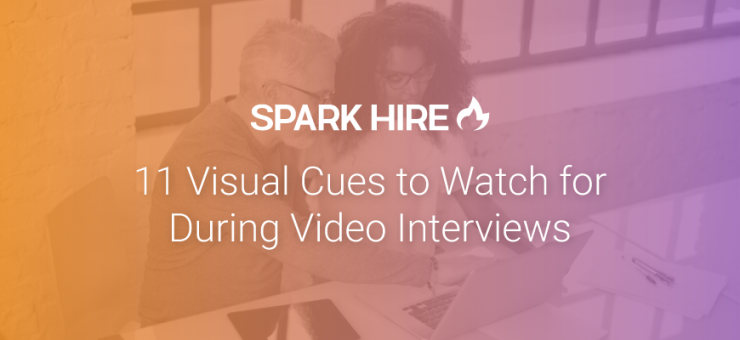Formal interviews are an opportunity to get to know the face behind the résumé. There’s no substitute for interacting with someone personably—you get to see their demeanor, experience their personality, and judge their character. It’s why so many top organizations have multiple in-person interviews. But as important as this process is, it is incredibly time-consuming. It’s why many top companies have furthered this goal with less time commitments by adopting video interviews.
The great thing about video interviews is that they are a great way to experience a person’s presence. They may not be physically in front of you, but the human interaction is still front and center. There are plenty of visual cues interviewers can pick up on to inform them about the candidate they’re speaking with. Here are 11 of the most important to gauge:
- Presentable dress: You may only see your interviewee from the waist up, but that’s enough to tell if they’re dressed for success. Did they dress in formal attire that would be presentable in an office? Or, are you looking at someone wearing a t-shirt?
- Eye contact: Does your interviewee maintain eye contact and stay engaged with you during the interview? Eye contact shows that their full attention is on you, and that they’re not multitasking. It can indicate how seriously they take the video interview. Also remember that “eye contact” on a video interview means looking into the camera, not directly at the screen.
- Hand talk: Many people are expressive speakers. They talk with their hands to add emphasis. This isn’t a good thing or a bad thing—just something to pay attention to. It can give you some insight to the personality of the person you’re speaking with.
- Active listening: Active listening is an important soft skill, and video interviews are a great forum to see if your candidates have it. Do they look attentive while you’re speaking? Do they formulate replies that elaborate on your question meaningfully?
- Posture: Posture can tell you a lot about a person. Someone who sits up straight, shoulders back, and head forward displays an aura of attentiveness and professionalism. Compare it to someone slouching or hunched over and the difference is evident.
- Attentiveness: Is your interviewee focused on you? Are they hearing what you’re saying? Do they think before formulating responses? Attentiveness is easy to spot on a video interview and it’s a good test of a candidate to see how they avoid distractions.
- Expression cues: Micro-expressions are small peeks into how people feel and react. A quick grimace, small smile, widening of the eyes, or flushed cheeks act as a tell for how your candidate really feels. It’s a good way to tell if you’re getting real answers!
- Demeanor: You want a positive, upbeat, motivated person working at your company. If the candidate on your screen wears a grimace, makes dry remarks, or seems reluctant to answer your questions, it’s worth noting. Visual cues are more telling than audial ones.
- Personal grooming: Personal grooming habits tell a lot about a person’s attention to detail and sense of self-image. Video interviewing with someone who’s taken the time to groom themselves for the interview shows forethought and awareness for standards.
- Preparedness: Interviews are conversational, and interviewees should come prepared to answer general questions about themselves and their abilities. Video interviewing lets you see how prepared someone is and how confident they are in their candid answers.
- Physical background: What’s going on behind your candidate? Their forethought to where they take a video interview shows awareness. Which candidate would you rather hire: one with a white wall in the background, or one in front of a pinup poster?
From the list above, it’s easy to see how video interviews give you fantastic opportunities to learn about candidates, before they’ve even stepped foot in your office. In addition, candidates get the comfort of interviewing in a space they’re familiar with; you get the chance to observe them in their natural environment, and gauge their preparedness.
Remember that a one-time video interview isn’t an absolute representation of who a person is. Visual assessment of their habits or how they behave is a good way to weed out outliers. For candidates who hold themselves in a professional (albeit nervous) manner, there’s always a second interview to learn more about who they are as a person.
About the Author

Mr. Dave Magnani is Managing Partner for M&A Executive Search. He has worked in professional services leadership roles for 25+ years serving a broad number of industries. Since 2014, Mr. Magnani has been focused on providing clients the expertise they need to advance their business either via National Executive Search or Placing Interim Executives or Expert Freelance consultants. Mr. Magnani joined M&A in 2017 and was primarily responsible for building M&A’s highly successful Interim Executive and Expert Consulting business enabling M&A to be one of the few providers that can offer both executive search and interim executives and consultants enabling clients to flexibly and affordably get the expertise they need to advance their business. Mr. Magnani is considered an expert in enabling the “Gig Economy” helping effectively bridge freelance consultants that have “been there and done that” into companies and is a frequent speaker on how both employers and professionals can most effectively leverage the “Gig Economy”.











